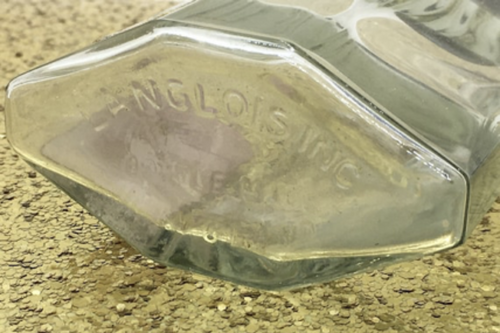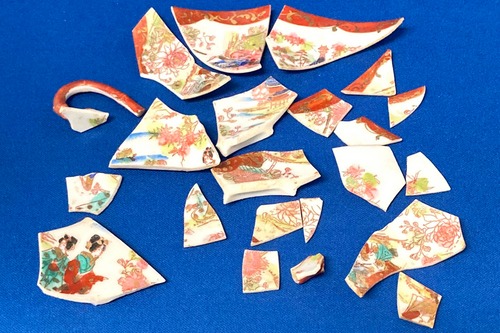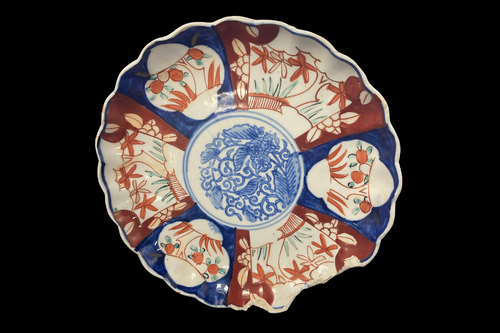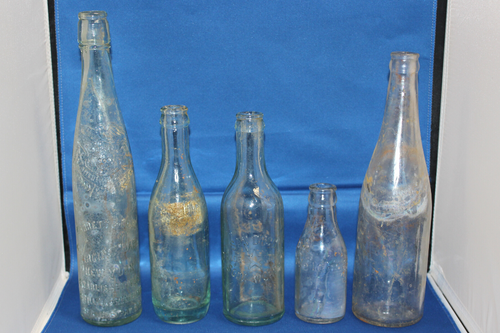
Artifacts of Summer
Collections Curiosities is a monthly blog highlighting intriguing artifacts, books, and archival materials that staff, volunteers, and interns have discovered in Center collections and the Center Library. This month, Community Outreach & Volunteer Coordinator Vanessa Chappins explores artifacts that remind her of summer.
Artifacts of Summer
By Community Outreach & Volunteer Coordinator Vanessa Chappins
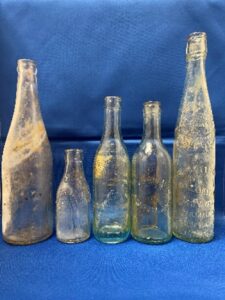
During summer, BBQ foods, cold drinks, and spending time on the beach are popular. When working in the Center lab, our volunteers and interns sometimes come across artifacts that remind them of these summertime pleasures. Here are a few highlights recently found in SDAC collections.
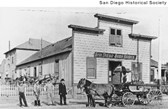
Credit: San Diego History Center
San Diego county inhabitants in the mid-1800s to early 1900s consumed some of the same summer drinks and condiments that we do today. Now, we often use plastic bottles, but back then, many beverages and condiments came in glass. Well-preserved glass artifacts can indicate manufacturing dates, company names, and even what the contents were inside. Many volunteers and interns use these markings to help identify the artifacts and their connection to the site where they were found.
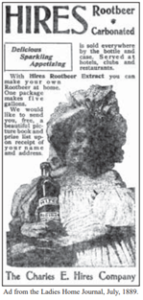
Beverages
Brands and types of beverages are still very much recognizable such as Welch’s Grape juice, root beer, mineral water, beer, and even wine! One interesting find is Item 1, an adult-size Armour’s grape juice bottle. Item 2 is a is a junior-sized Welch’s bottle, a well-known brand still sold at grocery stores.
Item 3 is a root beer bottle dating back to 1905 and was manufactured by a company called Charles E. Hires Co. You can read more about Hires Root Beer in this article.
The fizzy-water fad is not unique to today’s crowd. Item 4 is a soda mineral water bottle that dates back as early as 1898 and was manufactured locally at the San Diego Soda Works.
Item 5 is an aqua-tinted glass from a company called Garrett & Co., and it held an American wine called Virginia Dare.
Condiments
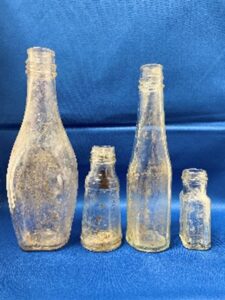
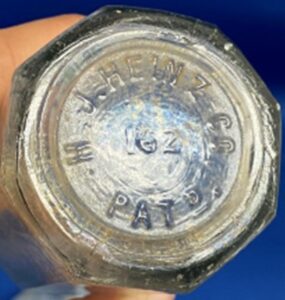
Variations of condiments that we use today can also be found in the collections. Items 6 and 7 are salad dressing bottles. You can read more about Tildesley & Co. Yacht Club Salad Dressing in this blog post.
The one company that continues to dominate the condiment world is H. J Heinz Co. Item 8 is a 1918 H.J. Heinz Co. ketchup bottle.
Item 9 held a chili powder that was manufactured in 1916 by a company called Gebhardt. Originating in Texas, this spice was influenced by Hispanic cuisine and helped create a taste for more diverse flavors in American home cooking. You can read more about Gebhardt’s Chili Powder in this blog post.
Advertising
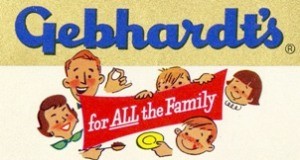
Credit: University of Texas at San Antonio Libraries
During this time period, many home cooks in the United States were reluctant to purchase items that they were used to making themselves at home. The marketing team for many of these companies worked hard to create followings for these new foods on the market.
San Diego has changed greatly since the mid-1800s to the early 1900s, and those changes are often reflected in our collections. Despite these differences, many artifacts are similar to items that we still use today. We hope that you have been inspired to discover the origins of your favorite summertime foods and beverages.


